
Level3 Orlando Data Center
By Erik Rodriguez
Tags: Level3 Orlando Data Center, 380 Lake Destiny Drive, Data Center Orlando, Orlando Data Center, Level3 Central Florida
This is an overview of the Level3 Orlando facility located at 380 Lake Destiny Drive, Orlando, Florida.
Introduction
First of all, don't get excited about this facility. It's nearly impossible to get in these days because Level3 has muscled out all the little guys and even re-sellers! Personally, I have access to this facility to maintain a single Juniper router. I contacted Level3 directly almost 2 years ago, and they wanted almost $4000/month for a single cabinet with 10 Mbps of bandwidth and about 25 amps of AC power. WOW! The only way to get into this facility is with a major commitment. I'd say at least 5 cabinets, maybe 10. With that being said, let's have a look around...
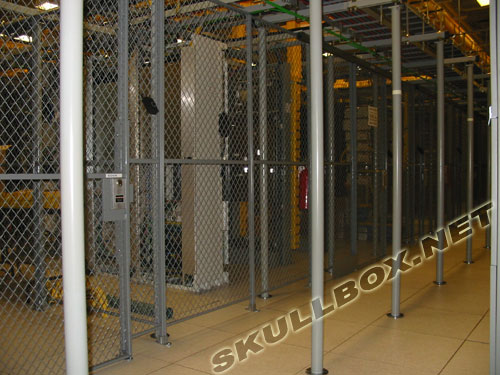
Construction
This is probably the nicest data center I've visited. The foundation is built well above the road, I'd say about 15 feet or so. There is plenty of extra fiber stock piled behind the building. Level 3 rates this building as Zone 0 seismic code construction. It is a total of 34,579 square feet, with 19,051 square feet of that being raised floor space.

The generator, fuel tank, and HVAC condensers are all located outdoors. The diesel fuel tank is large enough to supply the generator for a few days, and it's all protected by a barbwire fence and some outdoor security cameras.

Data Center Access
The front door is locked and they only way I've been able to reach someone inside the building (even during business hours) was using a swipe card to active the wall phone:

Access to the colocation room is from a door on the side of the building that requires a keycard. I have not confirmed this but have heard from other tenants that if you prop open any of the doors it trips a silent alarm.
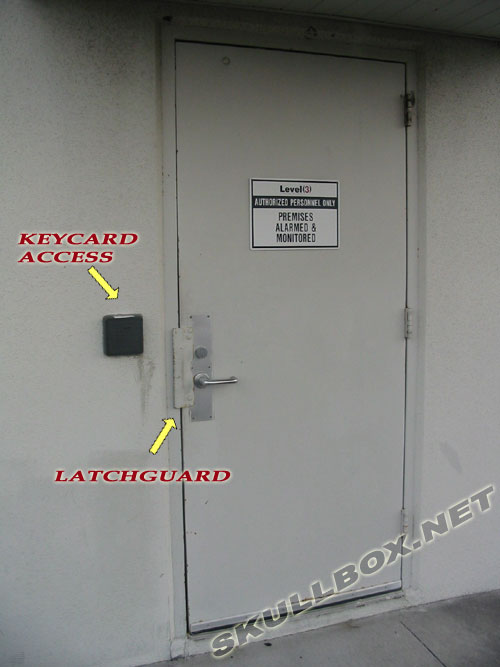
Once inside the building, you have access to nothing more than the restroom without your swipe card and a palm scan. Of course, Level3 has provided a nice (and probably expensive) sign:

You are required to enter a pin, then your palm scan after using your swipe card once more. Obviously, they don't want people tailgating, but I've never seen the facility busy enough to facility this. There are also cameras located at the major entry/exit points.
Data Center Floor
The data center floor is pristine. A clean setup with everything you'd expect from an Internet giant like Level3. As you can see in the pictures below, they chose nice large and vented raised floor tiles (shown next to my big foot). This setup also uses a hot/cold isle design to facilitate optimal cooling and better airflow.
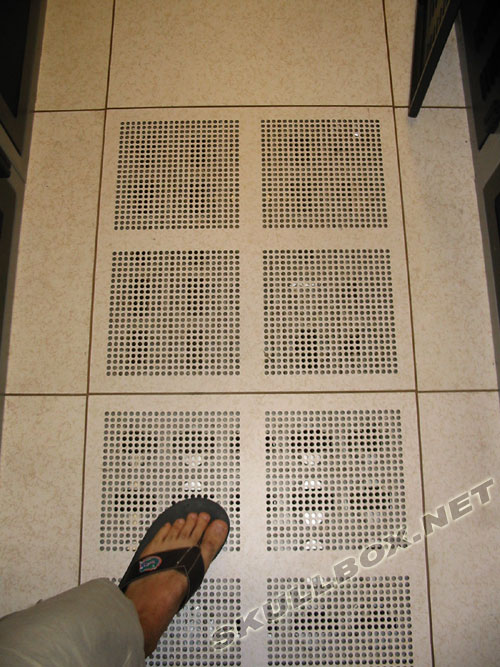
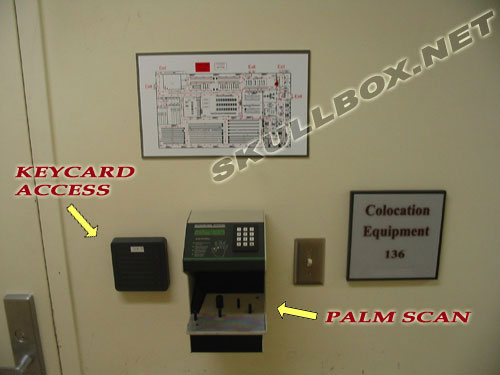
The raised floors seem to do nothing but cooling. All power and data cables come from overhead ladder racks.
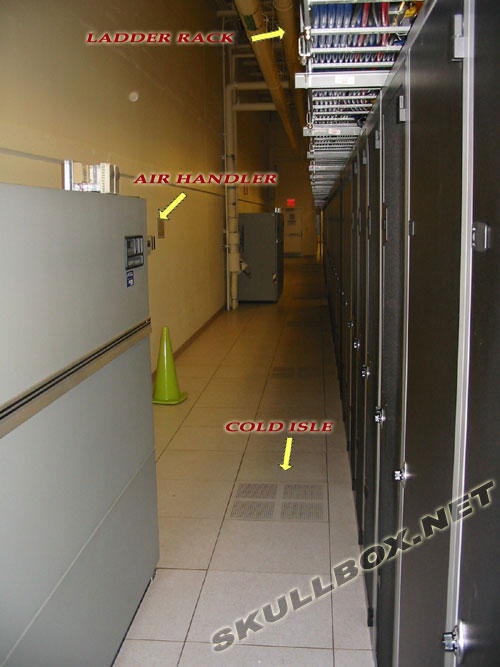
As you can see, they have split up different types of cabling above. Nothing comes into cabinets from the floor. Any fiber drops to the cabinets come from the yellow trays above. Something worth mentioning; don't hold your breath if you are waiting for a cross-connect from Level3. Christmas comes sooner if you know what I mean. They also may charge a monthly fee for that fancy cable...
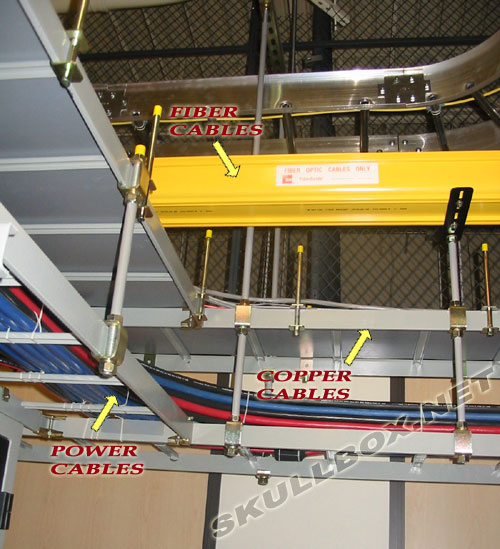
This image shows the hot isle. Despite the cold/hot isle design, the ambient temperate in the colocation area is around 75 degrees.
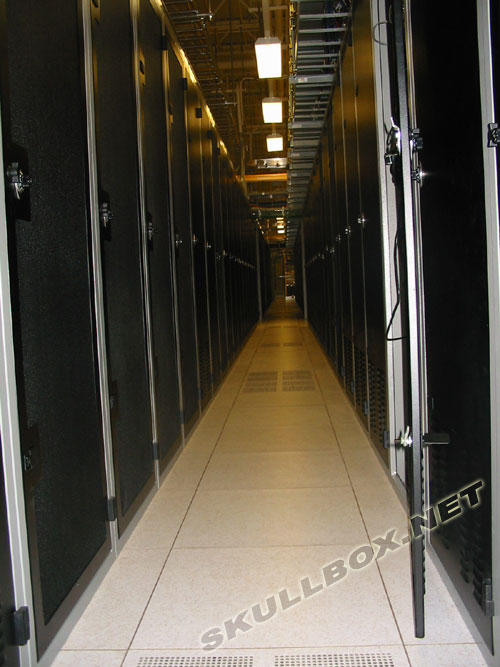
Pro's
As usual, I'll throw them out there:
- Solid Facility
- Many Carriers
- Exclusive Location
- Locking Cabinets + Caged Space
- Well Managed Infrastructure
The facility is solid. It's neat, clean, and I've never seen anything broken. There are also more than enough carriers in this building. To name a few that I know of; Level 3 (obviously), Sprint, AT&T, Brighthouse, XO, Savvis, TW Telecom, and MCI. It's the only Level 3 location (besides a POP here and there) in Central Florida, and this a facility that can house a massive amount of equipment. I'd put the total cabinet count around 100, and there is plenty of cage space as well. Remember, this is a Level 3 facility. They are among the best in the business at providing top notch data services. They will not overload the power and cooling of this building to make an extra buck. In my opinion, this is the most reliable facility in the Central Florida area.
Con's
Here they come...
- Price/Availability
- House Rules
- Inside Security
- Cooling/Fire Suppression
I touched a little on price and availability earlier in this article. I only know if 1 reseller that hasn't been muscled out yet. Previous resellers said they had thier rates skyrocket come renewal time. I also heard a rumor that Google purchased a large portion of this data center. However, I have not been able to confirm this. Level 3 reps point to power as the source of the price increase. I guess I could believe that to a certain extent. Power is a problem in all data center facilities in Orlando and other areas. They also have some strange rules about what you can and cannot do in this facility. For instance, they do not provide and do not allow crash carts? This means you must bring your own monitor, keyboard, etc. to get console access. Running cross-connects between cabinets must be approved. Under no circumstances can cross-connects be done on top of the cabinets! Also, rectifiers are not allowed. This means no APC (battery) devices of any kind. Therefore, you are completely dependent on the ability of Level 3 to provide uninterrupted power. However, they do have two seperate feeds from different power grids. They are one of the only data center's in town that do this. The lack of security cameras on the data center floor surprised me. Especially for the colocation area. I mention cooling as a con, but this is arguable. While the temperate is an acceptable 75ish degrees, the cabinet doors are 1 solid panel. They have a few small vents like a high school locker, but servers really heat up in there. Each cabinet has 1 or 2 110v AC fans that suck the air out the top. You can also pay Level 3 a one-time fee of $500 (last time I checked) to switch the doors to mesh. One could argue the solid doors are more secure, so I can see both ways. It's very easy to reboot a server by sticking a pencil or hanger through the mesh doors :( Fire suppression is also arguable. This facility has a "pre-action dry pipe system." This is a fancy way of saying we use a standard sprinkler system. They call it dry pipe because the overhead pipes must be filled with water before they discharge. Again, most facilities this size will have a dry pipe system. With the ban on Halon use, FM-200 and other alternative gas systems are very expensive and can be hard to effectively cover a room this size. I am not sure if this facility has a VESDA air sampling system, though I would image they do.
Conclusion
Overall, this is a great facility with plenty of life left. I can tell you from general observation, this isn't a big place for servers. Most of the equipment in this facility is network related. With the amount of providers that exist at this location, it is very attractive to those who need to peer, back haul or transport traffic to/from other carriers and/or locations.
Contact Us
NOTE: this form DOES NOT e-mail this article, it sends feedback to the author.
|
|
